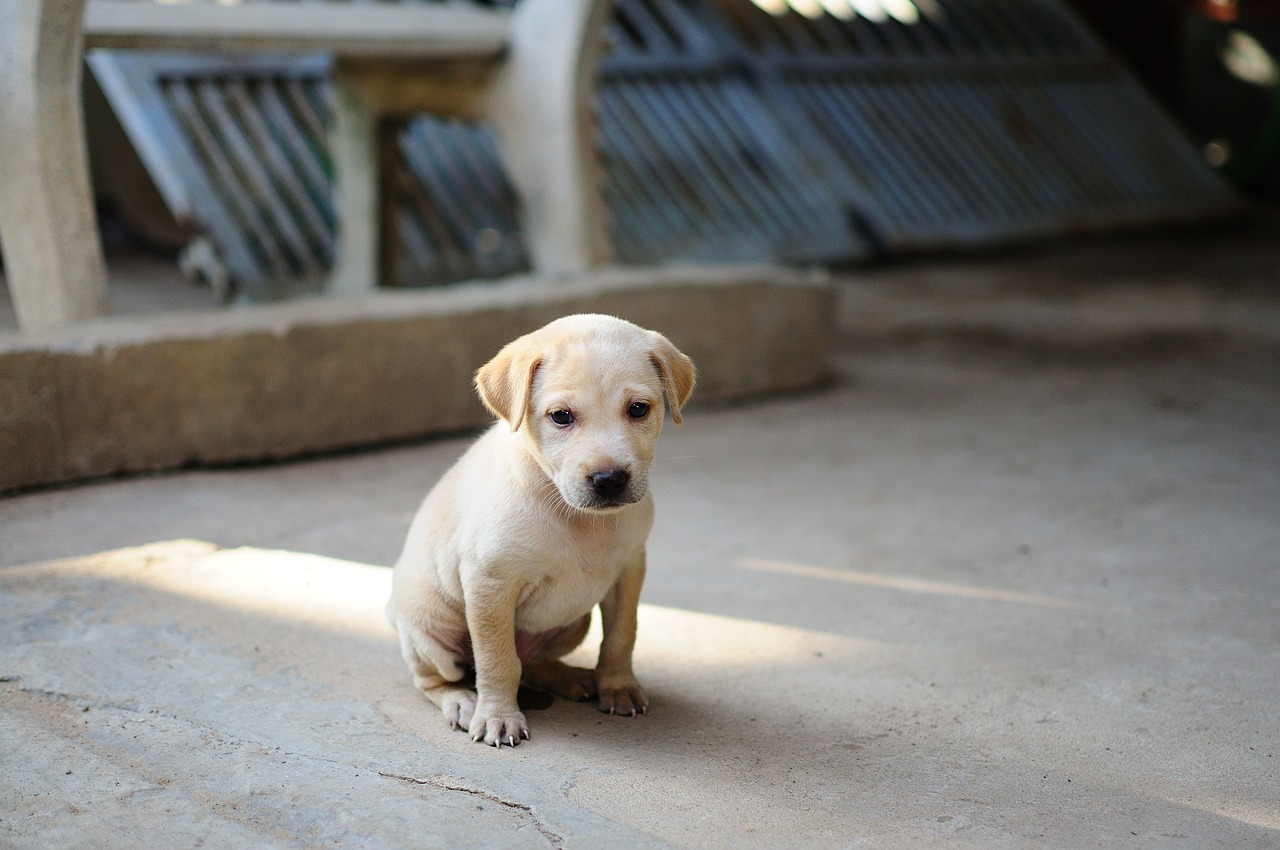This article provides a comprehensive overview of dog bite infection symptoms, guiding readers on when to seek medical attention and ensuring a thorough understanding of potential complications.
Understanding Dog Bites
Dog bites can vary in severity and their potential for infection. It’s crucial to recognize the nature of the bite and the associated risks involved. Even minor bites can lead to significant health issues if not properly addressed.
Common Symptoms of Dog Bite Infections
Identifying the symptoms of a dog bite infection is essential for prompt treatment. Common signs include:
- Swelling and Redness: These are initial indicators of infection that require careful monitoring.
- Pus or Discharge: The presence of pus is a clear sign of infection and should prompt immediate medical attention.
Localized Symptoms
Localized symptoms refer to the immediate reactions observed at the bite site, such as:
- Increased Warmth: The area may feel warmer than the surrounding skin.
- Tenderness: Pain or discomfort when touching the area can indicate infection.
Systemic Symptoms
Systemic symptoms indicate that the infection may have spread beyond the local area, affecting the overall health of the individual. These can include:
- Fever and Chills: Experiencing fever after a dog bite may indicate a serious infection that requires urgent medical intervention.
- Increased Pain or Swelling: If pain or swelling worsens instead of improving, it is vital to seek medical advice to prevent further complications.
When to Seek Medical Attention
Knowing when to seek medical attention after a dog bite can be life-saving. Certain symptoms warrant immediate consultation with a healthcare professional, such as:
- Rapid Onset of Symptoms: If symptoms develop quickly, do not hesitate to seek help.
- Signs of Allergic Reaction: Difficulty breathing or swelling in the face or throat should be treated as an emergency.
Preventing Dog Bite Infections
Preventive measures can significantly reduce the risk of infection after a dog bite. Proper wound care is essential for healing and infection prevention. This includes:
- Proper Wound Cleaning Techniques: Effective wound cleaning techniques can help mitigate the risk of infection. This includes thorough washing with soap and water.
- Importance of Tetanus Shots: Staying up to date with tetanus vaccinations is crucial, especially after a dog bite, to prevent serious complications related to infection.
Conclusion: Safeguarding Your Health
Understanding dog bite infection symptoms and knowing when to seek medical attention can protect your health. Always prioritize wound care and consult a healthcare professional when necessary. Being informed can make a significant difference in recovery and overall health outcomes.

Understanding Dog Bites
Dog bites can vary significantly in severity and their potential for infection. Recognizing the nature of the bite is essential for assessing the associated risks. Bites can be classified into various categories: minor, moderate, and severe, each with different implications for treatment and recovery.
Minor bites may cause superficial injuries, while moderate bites can penetrate deeper tissues, leading to increased risks of infection. Severe bites, especially from larger breeds or those with strong jaws, can cause extensive tissue damage and pose serious health threats. It is crucial to evaluate the bite’s depth, the size of the dog, and the circumstances surrounding the incident.
In addition to the physical aspects, understanding the behavioral context of the dog can provide insights into the bite’s potential severity. For instance, a dog that bites out of fear may not pose the same risk as one that bites aggressively. Furthermore, the health status of the dog, including vaccination history, plays a vital role in determining the risk of rabies and other infections.
After a dog bite, it is important to monitor the wound closely for signs of infection. Early symptoms can include swelling, redness, and the presence of pus. If these symptoms occur, it is advisable to seek medical attention promptly. Additionally, understanding the potential for systemic symptoms, such as fever and chills, can help individuals recognize when the situation may require urgent care.
Ultimately, being informed about dog bites and their potential complications is key to ensuring safety and health. Always prioritize wound care and consult a healthcare professional if any concerning symptoms arise.

Common Symptoms of Dog Bite Infections
Recognizing the symptoms of a dog bite infection is crucial for timely treatment and recovery. Infections can develop rapidly, and being aware of the signs can help prevent serious complications. Here, we will delve into the various symptoms associated with dog bite infections.
- Swelling: One of the first signs of infection is noticeable swelling around the bite area. This swelling may increase over time and can indicate that the body is responding to an infection.
- Redness: The skin surrounding the bite may become red and inflamed. This redness is often a sign of inflammation and should be monitored closely.
- Pus or Discharge: The presence of pus or any discharge from the wound is a clear indication of infection. This can be accompanied by an unpleasant odor, which further signifies the need for medical attention.
- Increased Warmth: The area around the bite may feel warmer than the surrounding skin. This increased warmth is a result of increased blood flow to the area as the body attempts to fight off the infection.
- Tenderness and Pain: If the bite site becomes increasingly painful or tender to the touch, it may indicate that an infection is developing. This pain may worsen over time, requiring prompt medical evaluation.
In addition to these localized symptoms, some individuals may experience systemic symptoms that suggest the infection has spread. These can include:
- Fever: A fever may develop as the body fights off the infection. This is often accompanied by chills and general malaise.
- Fatigue: A feeling of extreme tiredness or weakness can occur, indicating that the body is under stress from the infection.
It is essential to seek medical attention if any of these symptoms arise after a dog bite. Early intervention can significantly improve outcomes and prevent further complications.
Localized Symptoms
are crucial indicators of potential infection following a dog bite. These symptoms manifest directly at the site of the injury and can provide essential clues about the body’s response to the bite. Recognizing these signs early can be pivotal in preventing more serious complications.
Upon examination of the bite area, one may notice several that warrant attention. Increased warmth around the bite site is often the first sign, indicating that the body is reacting to the injury. This warmth can be accompanied by tenderness when touched, suggesting inflammation and a possible infection.
| Localized Symptoms | Description |
|---|---|
| Swelling | Visible enlargement of the area around the bite, indicating fluid accumulation and inflammation. |
| Redness | Change in skin color around the bite, often a sign of infection or irritation. |
| Pus or Discharge | Presence of yellowish or greenish fluid, indicating a bacterial infection. |
In addition to these symptoms, pain may intensify as the infection progresses. It is important to monitor these symptoms closely. If you observe a combination of increased warmth, swelling, and pus, it is advisable to seek medical attention promptly.
Ignoring these localized symptoms can lead to more severe health issues, including systemic infections that can affect the entire body. Always remember that early intervention is key to effective treatment and recovery.
In conclusion, understanding and recognizing after a dog bite is essential for ensuring proper care and preventing complications. If you experience any of these symptoms, do not hesitate to consult a healthcare professional.
Swelling and Redness
around a dog bite are not just minor inconveniences but significant indicators of potential infection. These symptoms can manifest shortly after the bite occurs and may escalate if not monitored closely. It is essential to understand that while some swelling and redness can be normal responses to an injury, excessive or worsening symptoms may signal a more serious issue.
When a dog bites, the skin and underlying tissues can become damaged, leading to inflammation. This inflammation often presents as swelling and redness, which are part of the body’s natural healing response. However, if these symptoms persist or worsen over time, they may indicate an infection, which requires immediate attention from a healthcare professional.
In addition to swelling and redness, other localized symptoms may include:
- Increased warmth at the bite site.
- Tenderness when the area is touched.
- Pain that intensifies rather than subsides.
If you notice pus or any unusual discharge from the wound, it is crucial to seek medical help without delay. These signs often indicate that bacteria have entered the wound, leading to an infection that could spread if left untreated.
Moreover, systemic symptoms such as fever, chills, or fatigue may develop if the infection spreads beyond the local area. In such cases, it is vital to act quickly and consult a healthcare provider to prevent serious complications.
To summarize, while swelling and redness are common after a dog bite, monitoring these symptoms closely is essential. If they worsen or are accompanied by other alarming signs, do not hesitate to seek medical evaluation. Early intervention can make a significant difference in recovery and overall health.
Pus or Discharge
from a wound is a significant warning sign that should never be ignored. It often indicates that an infection is present, which can lead to more severe health complications if not addressed promptly. Understanding the implications of pus or discharge is crucial for anyone who has sustained a dog bite or similar injury.
When a wound produces pus, it usually consists of dead white blood cells, bacteria, and tissue debris. This accumulation is the body’s response to fight off infection. The presence of pus can manifest in various ways, including:
- Thick, yellowish fluid: This is the most common form of pus, indicating a bacterial infection.
- Foul odor: A strong, unpleasant smell can suggest a more serious infection.
- Color changes: Pus can range from white to greenish, depending on the type of bacteria involved.
It is essential to monitor any discharge closely. If you notice pus or any unusual fluid coming from a wound, it is imperative to seek immediate medical attention. Delaying treatment can result in the infection spreading, leading to complications such as:
- Cellulitis: A skin infection that can spread rapidly.
- Abscess formation: A pocket of pus that may require surgical drainage.
- Sepsis: A life-threatening response to infection that can affect multiple organ systems.
In summary, the presence of pus or discharge from a wound is a clear indicator of infection that necessitates prompt medical evaluation. Always err on the side of caution and consult with a healthcare professional if you observe these symptoms.
Systemic Symptoms
play a crucial role in understanding the severity of infections resulting from dog bites. When an infection spreads beyond the local area of the bite, it can lead to a range of systemic symptoms that may significantly impact an individual’s overall health. Recognizing these symptoms early is essential for effective treatment and recovery.
Systemic symptoms often include:
- Fever: A rise in body temperature is a common response to infection. If you experience a fever following a dog bite, it may indicate that the infection is becoming systemic.
- Chills: Along with fever, chills can occur as your body attempts to fight off the infection. This can be a sign that the body is under stress.
- Fatigue: Feeling unusually tired or weak can be a sign that your body is working hard to combat an infection.
- Muscle Aches: Generalized muscle pain may also accompany infections as the body reacts to the underlying illness.
- Nausea or Vomiting: Gastrointestinal symptoms can occur as part of the body’s response to infection, and these should not be ignored.
It is important to note that the presence of these systemic symptoms indicates a need for immediate medical attention. The sooner you seek help, the better the chances of preventing serious complications. Timely intervention can lead to more effective treatment options and a quicker recovery.
In conclusion, being aware of systemic symptoms following a dog bite is vital for safeguarding your health. If you notice any of these signs, do not hesitate to consult a healthcare professional for further evaluation and treatment.

When to Seek Medical Attention
Understanding the implications of a dog bite is crucial for ensuring your health and safety. Knowing when to seek medical attention can be life-saving, as certain symptoms may indicate serious complications. This article aims to highlight the key signs that necessitate immediate consultation with a healthcare professional.
| Symptom | Action Required |
|---|---|
| Fever and Chills | Seek immediate medical attention as this may indicate a systemic infection. |
| Increased Pain or Swelling | If pain or swelling worsens, consult a healthcare provider to prevent complications. |
| Pus or Discharge | Immediate medical evaluation is essential to address potential infection. |
In addition to the symptoms listed above, localized symptoms such as increased warmth, tenderness, and persistent redness around the bite site may also require prompt medical intervention. It is essential to monitor these signs closely, as they can indicate that the infection is worsening.
- Persistent Redness: If the area around the bite remains red and inflamed, it may signify an infection.
- Foul Odor: Any unusual smell emanating from the wound should be evaluated by a healthcare professional.
- Difficulty Moving the Affected Area: If you experience restricted movement or severe discomfort, seek medical advice.
In conclusion, being aware of the symptoms that require medical attention after a dog bite is vital for your health. Prompt action can prevent serious complications and ensure effective treatment. Always prioritize your well-being and consult a healthcare professional when in doubt.
Fever and Chills
following a dog bite can be alarming symptoms that should never be ignored. These signs may indicate a serious infection, such as cellulitis or even a systemic infection like sepsis, which can arise from bacteria entering the bloodstream through the bite wound. Prompt medical intervention is crucial to prevent complications and ensure proper treatment.
When a dog bite occurs, the initial response often focuses on the immediate injury. However, it’s essential to monitor for systemic symptoms like fever and chills, as they can signify that the infection is spreading. Fever is the body’s natural response to infection, while chills may indicate that the body is struggling to regulate its temperature.
Here are some key points to consider regarding fever and chills after a dog bite:
- Immediate Action: If you experience fever and chills after a dog bite, seek medical attention immediately. Early intervention can be critical.
- Other Symptoms: Look for additional symptoms such as increased pain, swelling, or discharge from the wound, which can indicate worsening infection.
- History of the Bite: Consider the circumstances of the bite. Was the dog vaccinated? Was the bite deep? These factors can influence the risk of infection.
In conclusion, understanding the seriousness of fever and chills after a dog bite is vital for your health. Always err on the side of caution and consult with a healthcare professional if you experience these symptoms. Early diagnosis and treatment can make a significant difference in recovery outcomes.
Increased Pain or Swelling
Experiencing increased pain or swelling after a dog bite is a significant concern that should not be overlooked. While some discomfort and minor swelling are normal reactions following a bite, persistent or worsening symptoms can indicate a more serious underlying issue, such as an infection. It is crucial to monitor these symptoms closely to ensure timely medical intervention.
When the body reacts to a dog bite, it typically goes through a healing process that includes inflammation. However, if the pain intensifies or the swelling does not subside within a reasonable timeframe, this may suggest that the body is struggling to fight off an infection. Ignoring these warning signs can lead to complications, including the spread of infection to surrounding tissues or even systemic issues.
In addition to increased pain and swelling, there are other symptoms that may accompany these signs, such as:
- Fever: A rise in body temperature can indicate an infection.
- Redness: Expanding redness around the bite site can signify worsening inflammation.
- Pus or Discharge: The presence of pus is a clear indicator of infection.
It is essential to seek medical advice if you notice any of these symptoms. A healthcare professional can assess the wound and determine the appropriate course of action, which may include cleaning the wound, prescribing antibiotics, or administering a tetanus shot if necessary.
In conclusion, following a dog bite should prompt immediate medical attention. Early intervention can prevent serious complications and ensure a smoother recovery process. Always prioritize your health and well-being, and do not hesitate to consult a medical professional when in doubt.

Preventing Dog Bite Infections
Dog bites can lead to serious health complications, including infections. Taking proactive steps can greatly minimize the risk of infection and promote faster healing. Understanding the importance of proper wound care is crucial in this regard.
Immediate Actions After a Dog Bite
- Immediately wash the wound with soap and warm water for at least 15 minutes.
- Apply a clean, dry bandage to protect the area.
- Monitor the wound for any signs of infection, such as increased redness or swelling.
Proper Wound Care Techniques
After the initial cleaning, it is essential to:
- Use an antiseptic solution to further cleanse the area.
- Keep the wound covered with a sterile bandage to prevent contamination.
- Change the bandage regularly, especially if it becomes wet or dirty.
Recognizing Signs of Infection
Being vigilant about potential infection signs can lead to early intervention:
- Swelling or redness that worsens over time.
- Presence of pus or foul-smelling discharge.
- Fever or chills that develop after the bite.
The Role of Tetanus Shots
It’s important to ensure that your tetanus vaccinations are up to date. A tetanus booster may be necessary after a dog bite, especially if the wound is deep or dirty.
Conclusion: Taking Preventive Measures
By adhering to these preventive measures and practicing proper wound care, you can significantly reduce the risk of infection following a dog bite. Always consult a healthcare professional if you notice any concerning symptoms or if you are unsure about the appropriate care. Your health is paramount, and taking these steps can safeguard it.
Proper Wound Cleaning Techniques
are essential to prevent infections after injuries, particularly in cases such as dog bites. Understanding these techniques can significantly reduce the risk of complications and promote faster healing.
When a wound occurs, the first step is to ensure that the area is safe and clean. Thorough washing with soap and water is critical. Here’s a step-by-step guide to effective wound cleaning:
- Gather Supplies: You will need clean water, mild soap, sterile gauze, and antiseptic solution.
- Wash Your Hands: Before touching the wound, wash your hands thoroughly to avoid introducing bacteria.
- Rinse the Wound: Gently rinse the wound under running water to remove any dirt or debris. This helps to flush out potential pathogens.
- Apply Soap: Use mild soap to clean around the wound. Avoid getting soap directly in the wound, as it can cause irritation.
- Rinse Again: Rinse the area thoroughly to ensure all soap is removed.
- Dry the Wound: Use a sterile gauze pad to gently pat the wound dry. Avoid rubbing, as this can cause further damage.
- Apply Antiseptic: After drying, apply an antiseptic solution to help prevent infection.
- Cover the Wound: Use a sterile bandage to protect the wound from further injury and contamination.
Regularly change the bandage and monitor the wound for signs of infection, such as increased redness, swelling, or pus. If any of these symptoms occur, seek medical attention promptly.
In conclusion, maintaining proper wound cleaning techniques is vital for mitigating infection risks. By following these steps, you can ensure that your wounds heal effectively and safely.
Importance of Tetanus Shots
When it comes to dog bites, many individuals may overlook the significance of staying up to date with their tetanus vaccinations. This oversight can lead to serious complications if an infection occurs. Tetanus, caused by the bacterium Clostridium tetani, can enter the body through open wounds, including bite marks.
After a dog bite, it is essential to evaluate the wound and consider the potential risks. If the bite is deep or if the skin is punctured, the risk of tetanus infection increases significantly. Tetanus can lead to severe muscle stiffness and spasms, which can be life-threatening if not treated promptly.
Additionally, individuals who have not received a tetanus booster in the last ten years are at a higher risk. The Centers for Disease Control and Prevention (CDC) recommend that adults receive a booster shot every ten years, or sooner if they suffer a deep or contaminated wound. This recommendation is particularly crucial for those who have been bitten by animals, as the bacteria can be present in the mouth of a dog.
Recognizing the signs of an infection is vital. Common symptoms include swelling, redness, and the presence of pus at the site of the bite. If any of these symptoms arise, it is imperative to seek medical attention immediately. Furthermore, fever and chills may indicate that the infection has spread, warranting urgent care.
In conclusion, staying current with tetanus vaccinations is a critical aspect of post-bite care. It not only helps prevent serious complications but also ensures overall health safety. Always consult a healthcare professional for advice on vaccinations and wound care after a dog bite.

Conclusion: Safeguarding Your Health
Understanding the symptoms of dog bite infections and knowing when to seek medical attention is crucial for maintaining your health and well-being. Dog bites can lead to serious complications, and being aware of the signs of infection can help you act promptly and effectively.
After a dog bite, it is essential to monitor the affected area closely. Look for common symptoms such as:
- Swelling: Increased swelling around the bite site may indicate an infection.
- Redness: Redness that spreads from the bite area is a warning sign.
- Pus or Discharge: Any pus or unusual discharge from the wound should prompt immediate medical evaluation.
In addition to localized symptoms, be aware of systemic symptoms that could indicate a more serious infection, including:
- Fever and Chills: These symptoms can signify that the infection is spreading and requires urgent care.
- Increased Pain: Worsening pain or swelling over time necessitates a visit to a healthcare professional.
Preventing dog bite infections starts with proper wound care. Always clean the wound thoroughly with soap and water and consider seeking medical advice for a tetanus shot if necessary. Remember, prioritizing your health is paramount. Don’t hesitate to consult a healthcare professional if you notice any concerning symptoms after a dog bite.
By being informed and vigilant, you can safeguard your health and ensure a swift recovery from any potential complications related to dog bites.
Frequently Asked Questions
- What should I do immediately after a dog bite?
First things first, clean the wound thoroughly with soap and water. It’s crucial to remove any dirt or bacteria. After cleaning, apply a sterile bandage. Don’t forget to keep an eye on it for any signs of infection!
- How can I tell if a dog bite is infected?
Look out for symptoms like increased swelling, redness, warmth, and pus at the site of the bite. If you notice fever or chills, that’s a big red flag indicating the infection might be spreading!
- When should I seek medical attention after a dog bite?
If you experience severe pain, persistent swelling, or any systemic symptoms like fever, it’s time to see a healthcare professional. Better safe than sorry, right?
- Are there any preventive measures I can take?
Absolutely! Proper wound care is key. Clean the bite well, apply an antibiotic ointment, and keep it covered. Also, make sure your tetanus shots are up to date!
- Can dog bites lead to serious health issues?
Yes, they can! If not treated properly, dog bites can lead to infections like cellulitis or even more severe complications. Always take them seriously!












